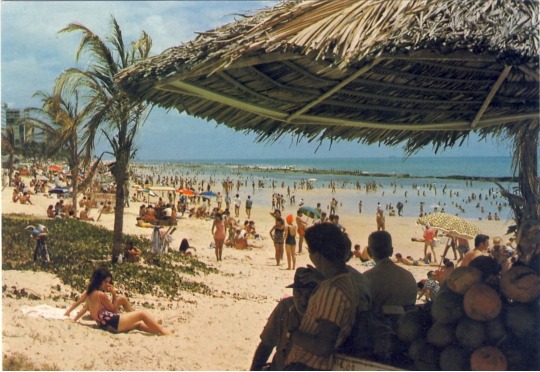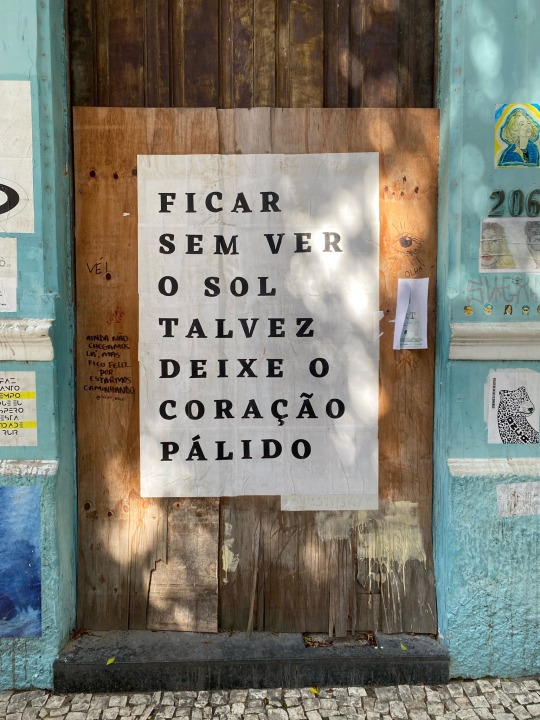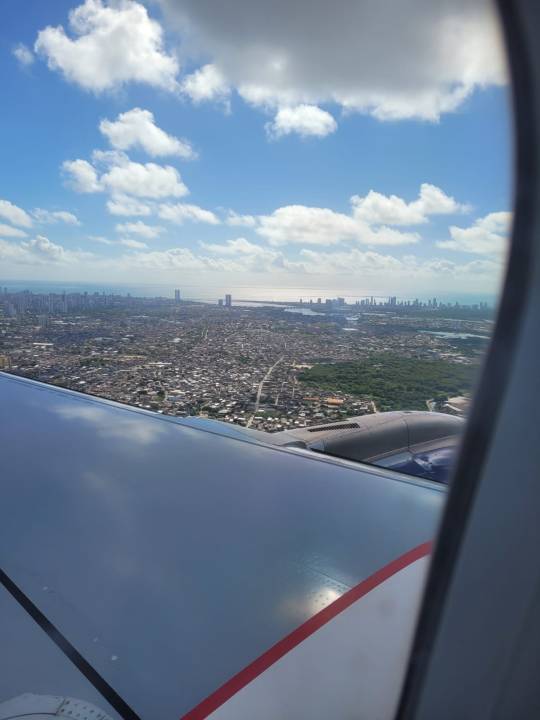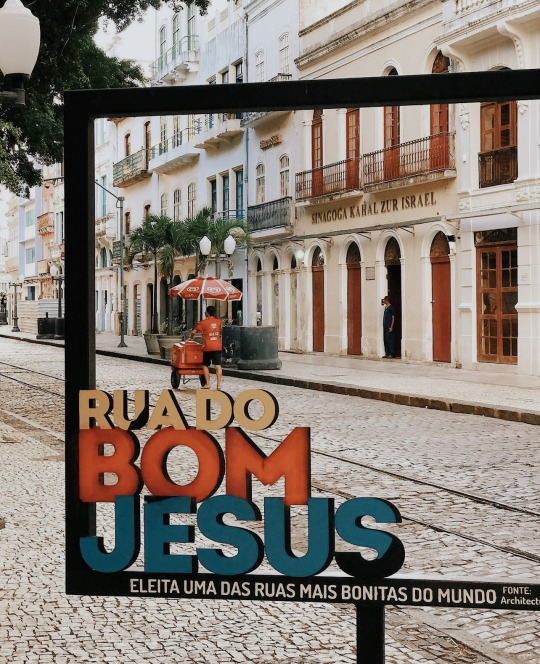#recife city
Text

Barraca de Coco, Praia de Boa Viagem - Recife Em 1970.
#Praia de Boa Viagem#Coco#Boa Viagem Beach#Recife#Barraca de Coco#Recife PE#Recife City#Pernambuco#Praias de Pernambuco#1970s#Recife Antigamente#Old Photo#Old Photography#Vintage#Efemérides
112 notes
·
View notes
Text

• Recife - Pernambuco
#recife#pernambuco#cidades brasileiras#brasilidade#brasilidades#Brasil#lambe lambe#amor#aesthetic#aesthetics#aesthetic photography#aesthetics photography#35mm#cityscape#city photography#cityphotography#photo#photography#landscape#street photography#streetphotography#arte urbano#nordeste#arte#street art#35mm photo#35mm camera#35mm photography#35mm color film#35mm color photography
71 notes
·
View notes
Text


Been having one hell of a few weeks so I think I'm allowed some tourism in my own city~
#turistando em hellcife#im actually driving my aunts who are visiting around to see the city#frog noises#recife#brazil
2 notes
·
View notes
Text

Recife, Brazil
1 note
·
View note
Text

39 notes
·
View notes
Photo

2 notes
·
View notes
Text
Population: 1,653,461
1 note
·
View note
Text
Viajar de Recife a New York
Todos os detalhes do trajeto entre a América do Sul e América do Norte em um super vídeo.
0 notes
Text

Recife, 2023
#pictures#girl#love#quotes#brazil#aesthetic#cute#pretty#black and white#recife#pernambuco#brasil#street#street photography#street art#street scene#nordeste#city#cityscape#city life#city photography#city girls#big city life#big cities
0 notes
Text
Welcome to our exciting iPhone 14 Pro Giveaway! 📱🎉
Here's your chance to win the latest and most cutting-edge iPhone yet, the iPhone 14 Pro! Packed with groundbreaking features, the iPhone 14 Pro is the ultimate device for tech enthusiasts and photography aficionados alike.
Experience the future of mobile technology with its stunning edge-to-edge display, powered by the latest A15 Bionic chip, ensuring lightning-fast performance and seamless multitasking. Capture moments like a pro with the revolutionary quad-camera system, delivering breathtaking photos and 8K video recording capabilities.
Participating in the giveaway is simple! Just follow these steps:
Like and share our giveaway post on all your social media profiles to spread the excitement. Learn more..
Tag at least three friends who would love to own the iPhone 14 Pro too. Learn more..
Make sure you're following our official page for updates and winner announcements. Learn more..
Increase your chances of winning by engaging with our content throughout the giveaway period. Learn more..
Click the link to enter the giveaway contest. Participate New..
This giveaway is open to all iPhone enthusiasts worldwide, and the winner will be selected at random at the end of the giveaway period. Don't miss out on this incredible opportunity to own the iPhone 14 Pro, the smartphone of the future!
Enter now, and good luck! 🤞🍀
#brazil#united states of america#italy#mexico#peru#chile#colombia#india#spain#germany#sao paulo#rio de janeiro#fortaleza#belo horizonte#brasilia#lima#salvador#new york city#goiania#recife#korean#fashion#mahakaal#cricket#cars#dubai#philippines#reels#toddler#sertanejo
0 notes
Text

Rua Duque de Caxias Centro do Recife Em 1938.
#Rua Duque de Caxias Recife#Centro do Recife#Ruas do Recife#Recife#Recife PE#Recife City#Recife Antigamente#Antigamente#Pernambuco#Nordeste#Fotografia Antiga#Fotografia#Fotografias#Foto#Foto Antiga#Photography#Photo#Old photo#Old Photography#Vintage#Vintage Postcard#Vintage Photography#Efemérides
67 notes
·
View notes
Text

• Rua do Bom Jesus - Recife Antigo.
#aesthetics#aesthetic#aesthetic photography#aesthetics photography#recife#cidades brasileiras#brasilidades#brasilidade#nordeste#cultura brasileira#city#city photography#cityscape#35mm#35mm color photography#35mm camera#35photo#35mm photo#35mm photography#35mm film#recife antigo#traveling#places#travel#summer#sunnyday#sunny#streetphotography#street photography#brazilian beauty
20 notes
·
View notes
Text
[T]hey frequently transgress the spatial boundaries imposed by humans to organize and govern spaces […]. [W]etlands spread out and do not conform to the straight and consistent lines between land and water. […] The smells of wetlands, of decomposing vegetation, of sulphur, were […] off-putting for [British] settlers in Aotearoa […]. Soon after the British-led military invasion of the Waikato region in 1863 and the confiscation of 480 000 ha of Maori lands, [...] [t]he ‘great swamp region of the Waikato’ was described as a picture of ‘desolation’ and ‘stagnant water’ where the ‘ground quaked and quivered beneath’ one's feet, and opened up unexpectedly to suck people down into ‘horrible depths of [the] black, stinking bog’. […] The omnipresent dangers of ‘damp vapour arising’ were deemed ‘highly prejudicial to residents’ health throughout Aotearoa. […] The ‘tepid swamps’, it was reported, poisoned the ‘otherwise pure air’ […].’ The Napier Swamp Nuisance Act enabled local government officials to ‘fill in’ (meaning to drain, establish levees, and build up the soil) any parcel of land deemed a muddy watery odorous ‘nuisance’ without the consent of the landowners. […] [P]oliticians suggested [that Aotearoa] be decontaminated through strategic interventions to remove and remake wetlands […]. Such ideas, which fused medical and socio-economic theories, justified indigenous dispossession and drainage works […].
Text by: Meg Parsons and Karen Fisher. “Historical smellscapes in Aotearoa New Zealand: Intersections between colonial knowledges of smell, race, and wetlands.” Journal of Historical Geography Volume 74, pages 28-43. October 2021.
---
On 24 December 1928 Italy’s fascist regime launched […] a fourteen-year national land reclamation programme aimed at [...] Italy's ‘death inducing’ swamps […]. The Pontine Marshes, a marshland spreading across 75,000 hectares south of Rome was given top priority […]. [T]he fascist regime used an extensive propaganda machinery to promote the programme […] as a heroic quest for producing an 'ideal' [...] landscape [...]. Newsreels documented step by step the struggle […], with Mussolini himself often featuring, overseeing the project, or even working the land. […] Nearly 3,000 newsreels and many documentaries were produced [...]. This was [...] [among] Italy's most important public works project[s] [...], a transformative enterprise that [...] would engage with an "untamed" natural environment and [force] it into a sanitised version of ideal fascist nature. [...] [The marshes] were linked to the idea of wilderness, [...] undisciplined, uncivilised, and unproductive [...]. This policy […] aimed […] [at] removing “unhealthy” [...] areas, through the process of sventramento (disembowelment). […] The construction of New Towns [...] in the Pontine Marshes [...] aimed at producing the 'ideal' settlement [...]. [These newly constructed] municipal buildings often boasted prominent towers [....] reigning supreme over the Marshes [...].
Text by: Federico Caprotti and Maria Kaika. “Producing the ideal fascist landscape: nature, materiality and the cinematic representation of land reclamation in the Pontine Marshes.” Social & Cultural Geography Volume 9. 2008.
---
[I]n Recife in the Northeast of Brazil [...] the transformation of the city was predicated on [...] [a] notion of whiteness that required the enclosure of wet, amphibious space to make dry land. [...] Racialised groups – of black, indigenous, and mixed heritages – and the houses, marshlands, and mangroves where they lived, were subject to eradication [...]. [F]rom the 1920s to 1950s, during the rise to hegemony in Brazil of [a form of eugenicist, modernist nationalism,] [...] [the] idea's heartland [was] the Northeast. [...] Recife is also a centre of Brazilian black culture [...]. One of the key sites in Brazil's slave and sugar trades [...], the city was [...] [a] hub. Many of these people lived in what came to be called mocambos, a word that designated an informal dwelling, but came to mean much more. [...]. Mocambos were seen as [...] the place where exploited labour was kept out of sight. [...] They were also [...] the inheritance [...] of the quilombo - the community of escaped slaves. [...] In July 1939, the proto-fascist administration [...] of Agamenon Magalhães, put in place by Getúlio Vargas' repressive Estado Novo, launched the Liga Social Contra o Mocambo (Social League Against the Mocambo, LSCM). The League emerged out of a tellingly named “Crusade” against the mocambos. [...] Mocambos were characterised as repellent, unhygienic, and dangerous: “the mocambo which repels. The mocambo which is the tomb of a race … a sombre landscape of human misery … which mutilates human energy and annuls work" [...]. These were the decades of the embranquecimento of the Brazilian population through public policies of immigration, miscegenation, and sterilisation [...]. This white supremacist ideology was inseparably a politics of nature. Magalhães wrote [in 1939]: The idle life, the life that the income of the mocambos provides [...]. It is a life of stagnant water. … [that] generates in its breast the venom of larvae, which are the enemies of life. Enemies of life, as are the mocambos and the sub-soil of cities, where the polluted waters contaminate pure waters [...]. Attempts to “cleanse” the city functioned through a distinct process: aterramento, the making of land. [...] Or as 1990s mangue beat [mangrove beat] musicians [...] put it, “the fastest way also to obstruct and evacuate the soul of a city like Recife is to kill its rivers and fill up its estuaries” [...].
Text by: Archie Davies. "The racial division of nature: Making land in Recife". Transactions of the Institute of British Geographers Volume 46, Issue 2, pp. 270-283. First published 29 November 2020.
62 notes
·
View notes
Text
Recife, Brazil

1 note
·
View note
Text
Обнаженная лежащая в гамаке - "Сладкие сны". Каррарский мрамор. Музей в городе Ресифе. Бразилия.



Именно эта скульптура позволила скульптору Фрилли остаться в истории. Благодаря руке, свисающей с гамака. Ибо ДО него никто подобный жест не воспроизводил. Остальные работы Фрилли не дотягивали до "высокого" искусства.
***** ***** *********** ****** ******** **** ********
Naked lying in a hammock - "Sweet dreams". Carrara marble. The museum in the city of Recife. Brazil. It was this sculpture that allowed the sculptor Frilli to remain in history. Thanks to the arm hanging from the hammock. For no one had ever reproduced such a gesture before him. The rest of Frilli's works fell short of "high" art.
#скульптура#мрамор#музей#история#искусство#красота#вдохновение#sculpture#marble#museum#history#art#beauty#inspiration#русский тамблер#русский блог
47 notes
·
View notes
Text
Brazil's new it-town for Carnival 2024
This year, Brazilians seem to have recognised that the heart of carnival culture is not in Rio, but in little-known Belo Horizonte.

The city of Belo Horizonte is little known outside Brazil. Despite being a state capital and Brazil's sixth-largest city, Beagá, as locals affectionately call it, doesn't have beautiful beaches or colonial architecture to help put it on the map. Until recently, the city didn't even participate in Brazil's much-anticipated carnival season.
However, Belo Horizonte's young Carnival has quickly become one of Brazil's most popular. This year's Carnival (officially from 27 Jan-18 Feb, with the festivities peaking from 9-14 Feb) will see a record number of 5.5 million people celebrating in the city's streets – a figure considerably larger than its resident population. Headline acts, including international superstar Anitta, are also making an appearance for the first time, confirming Beagá as Brazil's hot new Carnival destination.
It would be difficult to overemphasise how important Carnival is in Brazil. The period of merrymaking leading up to Lent is celebrated in other countries, but nowhere else is it pursued with such enthusiasm as in Brazil. Carnival is also big business: in 2023 it contributed more than R$8,180m (about £1.3bn) to the Brazilian economy.
Rio de Janeiro has traditionally captured almost half of this business and attracted most of the international tourists; its Carnival is the world's largest and most extravagant. Coastal cities like Salvador and Recife also have a strong Carnival tradition, while more recently, Brazil's largest metropolis, São Paulo, has emerged as an important Carnival destination.
But this year, Brazilians-in-the-know are heading to Belo Horizonte.
Continue reading.
14 notes
·
View notes